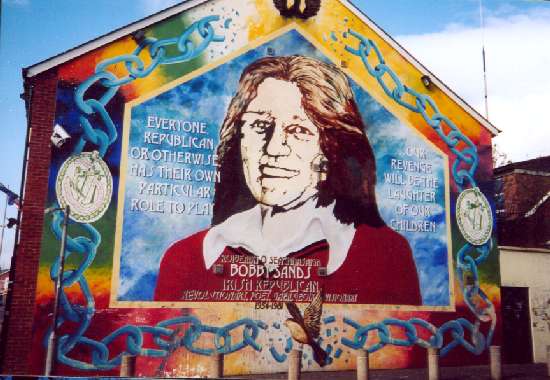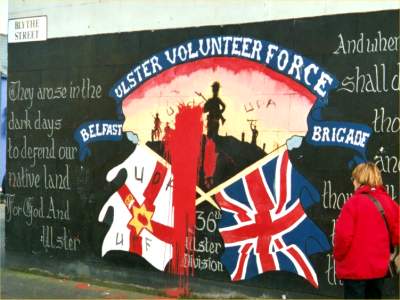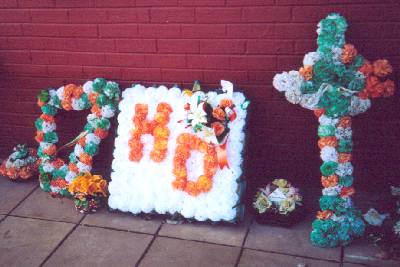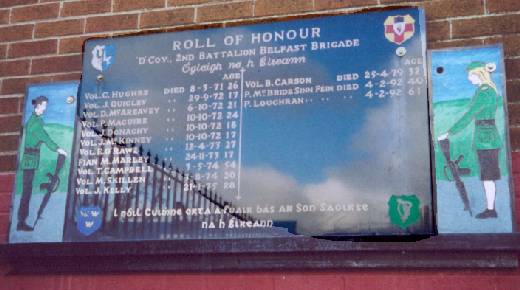 Version
française
Version
française
'21701792622','belfasta','irl');
//-->
Ulster: Belfast
(continuation)
Please, see also Dublin, Bantry,
and near Bantry, CastleDonovan, Gougane
Barra,
and the neolithic sites of Beara's peninsula
All that you want to know about the ancient and the famous Clan
O' Donovan
Belfast( centre)
The radical districts
The city of Belfast
presents two very different aspects.
A
modern centre, with businesses but rather austere and left early by
the inhabitants who get back the districts.
These are marked
by a community. Only 10 % of the inhabitants live in "mixed" districts.
The most radical
districts are covered with flags, with symbols and with regularly repainted
murals, the pavements of streets loyal supporters are painted in blue -
white-red, the colours of the Union-Jack
When districts
are close, No-man's-land ruined always exist with streets partially blocked
by metal gates. Police stations are immense bunkers protected by wire nettings
Link: a very
detailed , complete and objective site: cain.ulst.ac.uk
Protestant and loyalist
Fields(zones) buffers

Among Falls Road ( Catholic)
And Shankill Road ( Protestant),
Double reinforced door
|

Police station, between Sandy Row (Protestant)
and the district of the Falls ( Catholic),
|

Removable dam in Belfast
|

Among Falls Road and Shankill Road
|
Catholic republicans
The murals of the
catholic districts are especially directed to the protest against the conditions
of detention of the republican prisoners and against the methods of intervention
of the police.
In the prison of
Long Kesh, near Lisburn, 10 miles from Belfast, the republican prisoners
had the status of political prisoners until 1976. They were so exempted
from works of the prison, wore civil clothes and kept a certain internal
organization within the prison.
This status of
political prisoner was deleted to them in 1981, and the republican prisoners
undertook in a process of non-cooperation, refusing to wear the uniform
of prisoner, to wash himself and for some to eat.

Mural in the glory of Bobby Sands
Bobby Sands was
the leader of the republican prisoners, on March 1-st he begins a hunger
strike.
On April 10 Bobby
Sands, always on hunger strike to Long Kesh, is elected representative
of Fermanagh and South Tyrone at Westminster, as a replacement of Franck
Maguire.
On May 5, Bobby
Sands dies in his cell of Long Kesh, after 66 days of hunger strike. Rape
riots in Belfast, Derry and Dublin.
He is buried in
the cemetery Miltdown of Belfast.
In quite 10 republican
prisoners will die in these conditions until October, 1981. By that time,
their conditions of detention improve and they stop the movement.
Return at the beginning of the page Belfast














